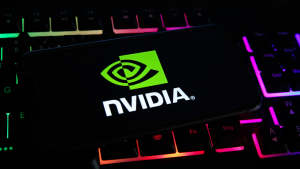MarketWatch published an article early in 2022 which highlighted last year’s best-performing S&P 500, mid-cap, small-cap, Nasdaq-100, and Dow 30 stocks. Some of the names on the five lists were cited by analysts as the top growth stocks to buy in 2022.
We know in hindsight that growth stocks weren’t the best bet over the past eight months. That distinction goes to energy stocks. The energy stocks in the S&P 500 jumped almost 45% in the first eight months of 2022. Out of the 11 sectors in the index, utilities is the only one besides energy in positive territory in 2022. The S&P 500’s utilities rose 3.4% through the first eight months of 2022.
For this article, I’m tasked with selecting seven growth stocks to buy that have a better-than-average shot of appreciating ten-fold over the next five years.
I’m going to take at least one name from each of the five MarketWatch lists.
And to qualify for this column, stocks will have to have an average rating of “overweight” or “buy” from Wall Street analysts.
| NVDA | Nvidia | $136.47 |
| DKS | Dick’s Sporting Goods | $108.23 |
| PRFT | Perficient | $73.49 |
| MRNA | Moderna | $138.57 |
| AAPL | Apple | $155.81 |
| ORLY | O’Reilly Automotive | $702.70 |
| CCRN | Cross Country Healthcare | $24.79 |
Nvidia (NVDA)

Nvidia (NASDAQ:NVDA) gained 125.5% in 2021. It had tumbled 54% in 2022 through Friday.
However, the analysts remain bullish on NVDA stock. Of the 44 covering NVDA , 35 rate it a “buy” or an “overweight.” Only one analyst has a “sell” rating on it. Their average price target for the shares is $211.02, more than 50% above its current share price.
The chip maker’s three-year annualized average revenue growth is 32%.
That’s the good news. The bad news is that NVDA expects its Q3 revenue to fall by 17% compared to the same period a year earlier. Also, it took a $1.34 billion charge in Q2 to account for the inventory that it wrote down due to slower-than-expected revenue growth.
CEO Jensen Huang remains confident that the gaming market will rebound.
“While Gaming navigates significant short-term macroeconomic challenges, we believe the long-term fundamentals in Gaming remain strong,” Huang stated on the company Q2 earnings conference call.
“NVIDIA RTX has redefined computer graphics and is now supported by almost 300 games and applications. NVIDIA’s GeForce GPUs are the most coveted brand by gamers, representing 15 of the top 15 most popular GPUs on Steam.”
NVDA stock hasn’t been this low since April 2021, more than 17 months ago. I like the chances of its share price rising ten-fold over the next five years.
Dick’s Sporting Goods (DKS)

Dick’s Sporting Goods (NYSE:DKS) gained 116.4% in 2021. It has given 6% back in 2022.
Of the 26 analysts covering DKS stock, 13 rate it a “buy” or an “overweight.” Only one rates it a “sell,” and analysts’ average price target on the name is $124.78, about 16% higher than its current share price.
Investors who did not carefully read the retailer’s earnings report would likely have wrongly concluded that it had a dud of a quarter. It did not. That’s far from the truth.
The 5.1% decline in Dick’s same-store sales may scream “run for the hills,” but the retreat came on the heels of a 20% increase in SSS in Q2 of 2021. Even more impressively, Dick’s net sales of $3.1 billion last quarter were 38% higher than in the same period of 2019.
And, as Executive Chairman Ed Stack pointed out, its earnings before taxes (EBT) in Q2 was equal to its EBT for all of 2019.
“The state of our industry is strong, and we remain in a great lane. DICK’S is the clear market leader, and as a result of our transformation, we are well-positioned to extend our lead and deliver long-term sales and earnings growth,” Stack stated in the company’s quarterly press release.
Maybe DKS stock won’t appreciate ten-fold over the next five years, but you can be darn sure that you won’t lose much on the shares either. Their risk/reward outlook is excellent.
Perficient (PRFT)

Perficient (NASDAQ:PRFT) gained 171% in 2021. It’s down 43% in 2022.
The Missouri-based company is a consulting firm that helps its customers utilize digital technologies to better engage with their customers. It provides its services to healthcare, financial services, manufacturing, automotive firms, and companies in several other industries.
Over the past three years, its average annualized revenue growth was 15.2%. Out of nine analysts, seven rate it a “buy,” with two “holds” and no “sell” recommendations. Their average price target on the shares is $115.25, 52% versus its current level of $72.77.
The company’s Q2 results were excellent. Its revenues rose 21% year-over-year while its earnings per share, excluding some items, jumped 26%. For all of 2022, it expects revenue of $915 million at the midpoint of its guidance. On the bottom line, the midpoint of its outlook equates to adjusted EPS of $4.30
Based on the company’s 2022 guidance, it’s trading at 17.6 times its EPS and 2.9 times its sales. Those are both reasonable given its growth prospects.
In July, the company announced that it would expand in India by adding new locations in Hyderabad and Pune, and increasing the office space in three other cities. The move adds approximately 73,000 square feet of office space for almost 2,000 new employees.
These additions should meaningfully increase its revenue.
Moderna (MRNA)

Moderna (NASDAQ:MRNA) gained 143% in 2021. It’s down 45% in 2022.
August ended with some good news for MRNA. First, it announced on Aug. 31 that the U.S. Food and Drug Administration (FDA) approved the company’s emergency use authorization (EUA) application for its Omicron-targeting Covid-19 booster vaccine for adults 18 and over. A day later, Health Canada issued the same approval.
Moderna will initially supply 12 million doses to Canada, which will have an option to purchase an additional 4.5 million doses.
In early August, Moderna reported its earnings for the first six months of 2022. On the top line, its revenues rose 71% YOY to $10.8 billion. On the bottom line, it earned $6.7 billion from its operations, 56% higher than during the same period a year earlier.
Moderna is generating so much cash that it finished Q2 with $18.1 billion of cash and investments, up from $17.6 billion at the end of December. Moderna is trading at three times its cash. That’s a cheap valuation.
Despite its low valuation, analysts are lukewarm on MRNA. Of the 19 analysts covering its stock, only seven rate it “overweight” or “buy.” Most have “hold” ratings on it and one has an outright “sell” rating on the shares. However, the analysts’ median target price is $197.00, versus its current price of $138.
Moderna’s pipeline is substantial. It has 31 of its 43 development candidates in clinical trials. One or two of those are bound to pay off in a big way.
Apple (AAPL)

Apple (NASDAQ:AAPL) gained 34.6% in 2021. It’s down a little more than 12% in 2022.
A Barron’s article from August made an interesting point about Apple’s size being a big negative for AAPL stock.
“As the largest U.S. company by far—with a market capitalization more than $500 billion greater than the number-two, Microsoft (MSFT)—Apple is widely owned and has a tendency to drag around, and be dragged around by, the major indexes,” Barron’s contributor Jack Denton wrote.
“After all, it makes up more than 7% of the entire S&P 500. If Apple was its own sector, it would have the seventh-largest weighting out of 12 and be almost twice as large as the energy sector.”
Despite the concerns about China’s slowing economy hurting Apple’s sales, analysts remain relatively upbeat about its stock. Of the 41 analysts covering AAPL, 32 rate it “overweight” or a “buy.” Only two have an “underweight” or a “sell” rating on it.
Apple’s services business continues to be very profitable. In the first nine months of 2022, the gross margin of its services business was 72%, almost double that of its products business.
O’Reilly Automotive (ORLY)

O’Reilly Automotive (NASDAQ:ORLY) appeared in my July column, called the 7 Best Retail Stocks to Buy Now. ORLY made the list because it consistently grows its free cash flow. It’s up almost 20% in 2022 relative to the S&P 500. Over the past five years, it’s up four-fold compared to the index.
ORLY gained 56% in 2021. Analysts generally like the stock. Of the 24 covering it, 17 have “buy” or “overweight” ratings on it, and their average price target is $768.63, versus its current price of $701.50.
I know that doesn’t seem like much of a difference. However, the shares perform well over the long haul. Since 2000, they’re up 8,400%, representing a compound annual growth rate of 22.8%.
This little snippet from CEO Gregory Johnson’s Aug. 23 speech encapsulates the state of O’Reilly’s business:
“So when you look at a 2-year stack basis, that comp will be 21%; 3-year, 28.5%. Gross margin year-to-date 51.6%; operating margin, 21.1%. And we’ve opened 116 net new stores and are on track to meet our projection of 175 to 185 stores for the year,” Johnson stated.
“Diluted earnings per share came in at $15.94. We generated $1.2 billion in free cash flow and repurchased $2.2 billion worth of our stock year-to-date under the stock repurchase program.”
As I said earlier, O’Reilly knows how to grow its free cash flow, but it’s also better than most at allocating it. Over the long-term, you won’t do much better than ORLY.
Cross Country Healthcare (CCRN)

Cross Country Healthcare (NASDAQ:CCRN) gained 213% in 2021, so it’s not surprising that it’s cooled off in 2022. However, relative to the Russell 2000, it’s up more than 9% on the year.
Cross Country works with healthcare clients such as hospitals, outpatient clinics, ambulatory clinics, physician practice groups, and other healthcare-related facilities to recruit and staff their businesses. The demand for its services is very strong.
Over the last three years, its revenue has grown at an annualized rate of 27.1% , while its operating income rose by an average of 104.4% annually. That’s some pretty good growth–and I don’t think that the firm is going to stop growing anytime soon.
It’s fair to say that the sequential decreases in its financial results that occurred in Q2 will continue in the back half of the year as staffing shortages dissipate, returning to more normal historical levels.
For example, in Q3, the company expects revenue of $610 million at the midpoint of its guidance. That’s 62.5% higher than a year earlier but down 19% from the previous quarter. Its adjusted EPS should also fall in Q3 versus Q2.
The company’s biggest growth driver is its Managed Service Programs (MSPs). Between 2015 and 2021, the estimated revenue of these MSPs grew by $800 million to $1.1 billion. The annual run rate of its revenue in Q2 was $2.2 billion. It has approximately 100 customers across more than 550 facilities.
Investors should expect more moderate growth from CCRN– barring any significant M&A transactions — but not a return to the slower growth that it generated before the pandemic.
On the date of publication, Will Ashworth did not have (either directly or indirectly) any positions in the securities mentioned in this article. The opinions expressed in this article are those of the writer, subject to the InvestorPlace.com Publishing Guidelines.
Will Ashworth has written about investments full-time since 2008. Publications where he’s appeared include InvestorPlace, The Motley Fool Canada, Investopedia, Kiplinger, and several others in both the U.S. and Canada. He particularly enjoys creating model portfolios that stand the test of time. He lives in Halifax, Nova Scotia.
